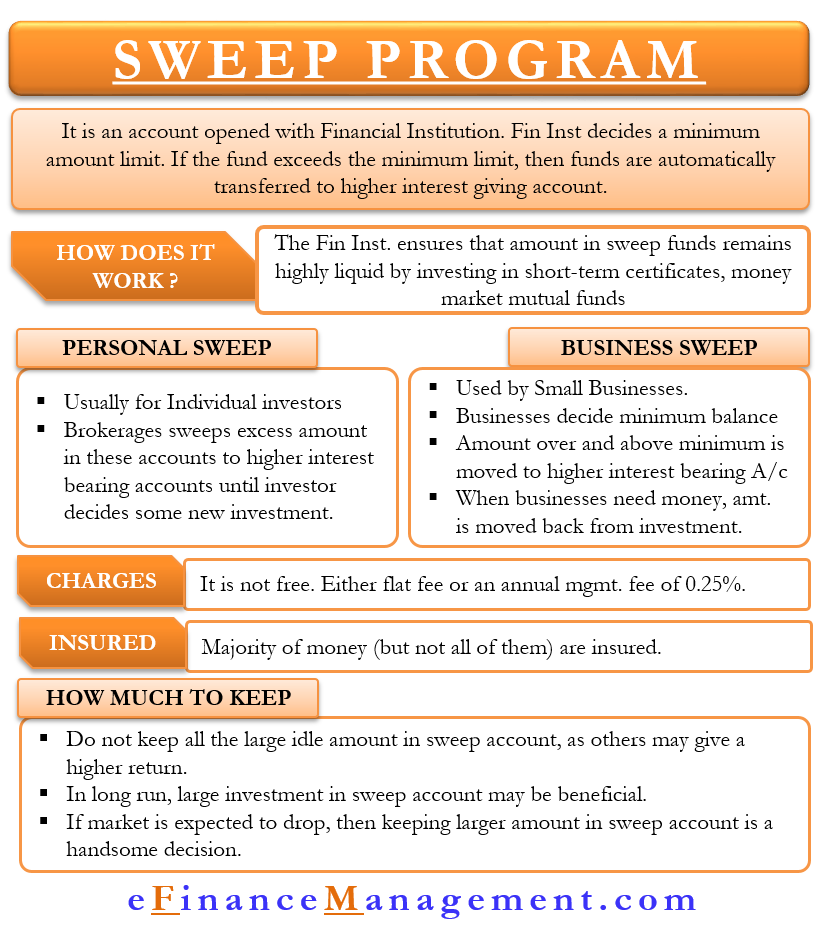
You should review your brokerage account agreement and statement to determine if you are participating in a bank sweep program for your cash. How do I know if I am participating in a bank sweep program? The protections for cash at a bank primarily will derive from banking laws and regulations, including FDIC deposit insurance. The terms and conditions of bank sweep programs vary. This investor alert focuses only on the first option: bank sweep programs. Other options include leaving cash in the brokerage account, or sweeping cash to one or more money market mutual funds. One option, a bank sweep program, typically involves the automatic transfer (or “sweep”) of cash in the brokerage account into a deposit account at a bank that may or may not be affiliated with the broker-dealer.
Sweep bank transaction how to#
This Investor Bulletin describes some of the potential risks associated with bank sweep programs and suggests questions you may want to consider asking your broker-dealer to help you decide how to best manage the cash in your brokerage account.īroker-dealers may offer you several options for managing your cash. But do take into account if you are better off investing the surplus in other instruments that work better for your overall financial goals.The SEC’s Office of Investor Education and Advocacy is issuing this Investor Bulletin to help educate investors about bank sweep programs, which some broker-dealers offer to their customers as a way to manage cash in their brokerage accounts. The facility does work well for those who maintain substantial idle balance in their savings account. In some cases, the sweep-in facility might offer only marginally better rates than your savings account. The default term of the sweep-in deposit into which your surplus amount is transferred will vary based on what your bank offers, and so will the interest rate. While the sweep-in facility can help you make more off surplus funds, you should consider a few things before opting for it. Even if you dip into the deposit, the balance amount will continue to earn interest at the same rate. Typically, in order to be eligible for it, you have to open an FD of at least ₹25,000 with your bank.Īlternatively, you could open a premium account where the minimum balance on either a monthly or quarterly basis is in the range of ₹25,000 to ₹1 lakh.Īside from a better interest rate, another advantage the sweep-in facility offers is that it forms a separate corpus that you can dip into during emergencies, without touching your regular investments or having to liquidate FDs.Īlso, it has no fees or penalties on withdrawal. The sweep-in facility is not offered to all bank customers. The only difference between a sweep-in facility and a flexi deposit is that in the former, the bank automatically opens the deposit to sweep surplus funds into, while in the latter, you will have to manually start the sweep-in deposit and link it to your savings account for surplus funds to be transferred into it. HDFC Bank offers it as a sweep-in fixed deposit while ICICI Bank calls it a flexi deposit.

Any excess amount in the savings account is automatically transferred to a sweep-in deposit in multiples of ₹1,000.
Sweep bank transaction plus#
For instance, State Bank of India’s savings plus account basically serves the same purpose.


Different banks have different names for the facility.


 0 kommentar(er)
0 kommentar(er)
